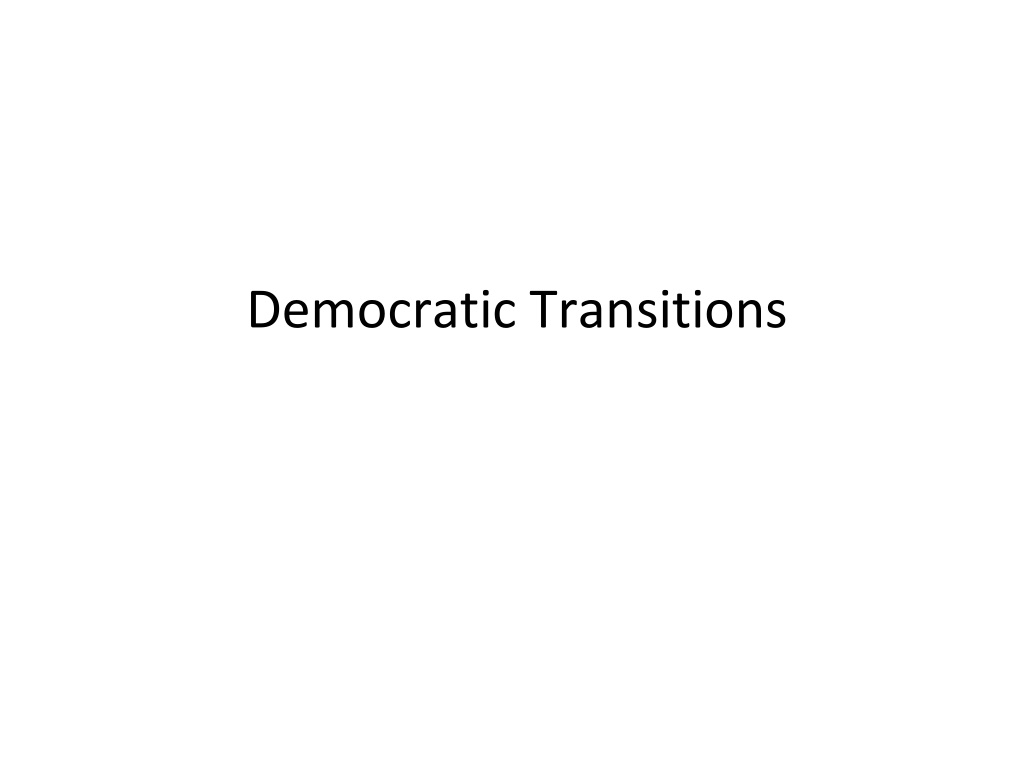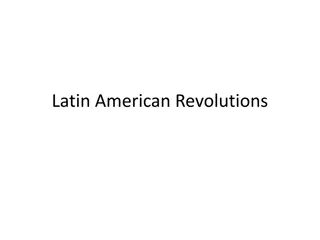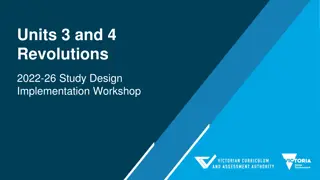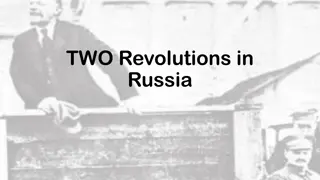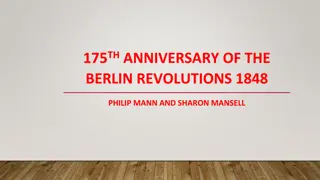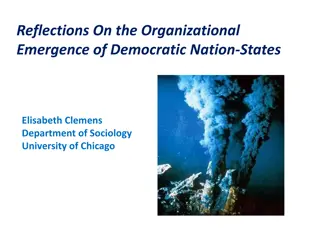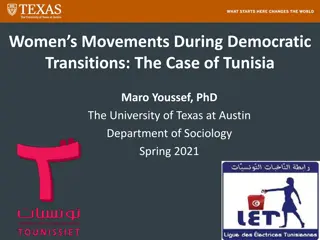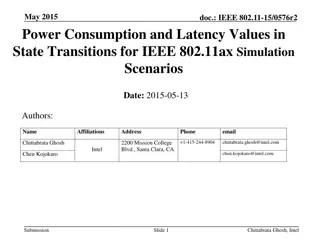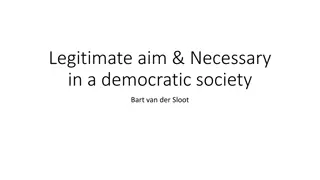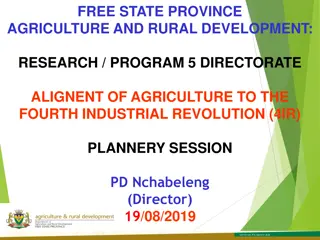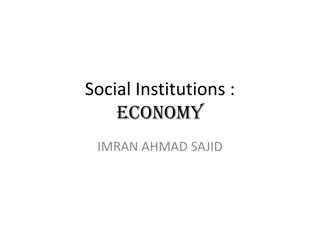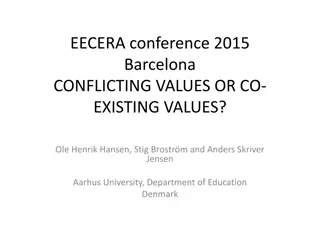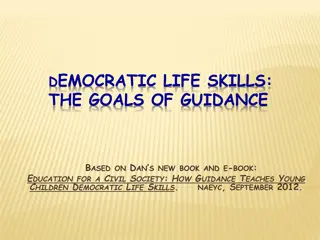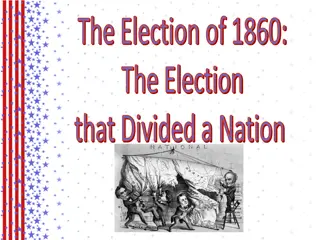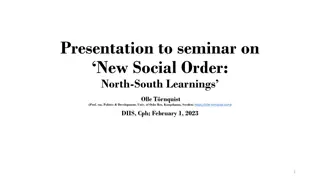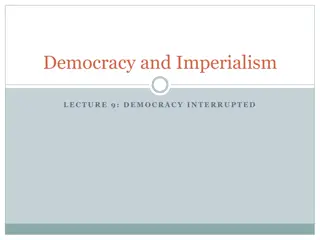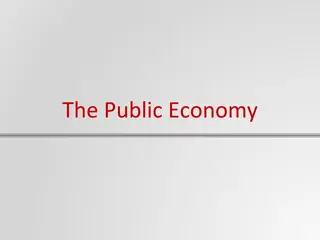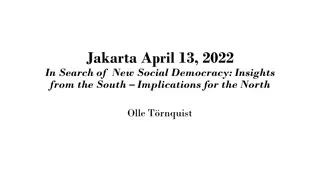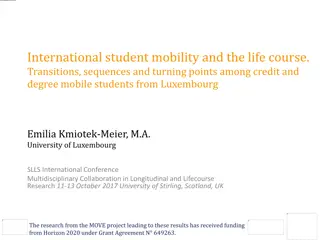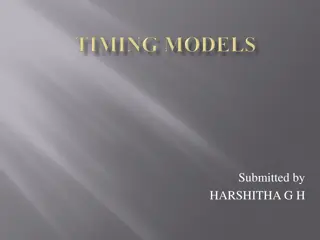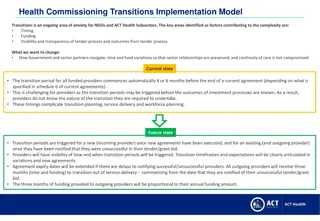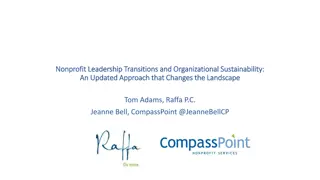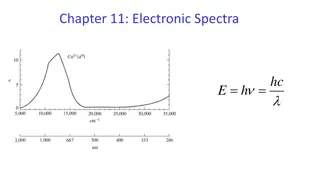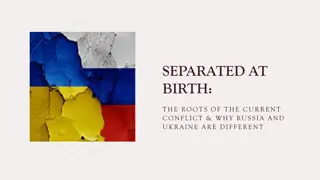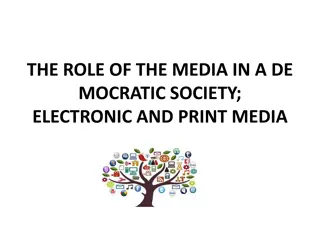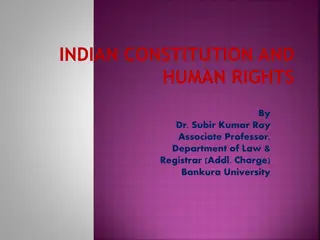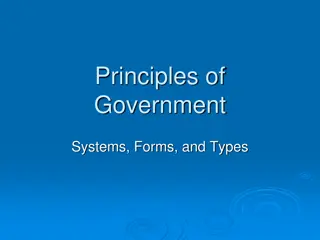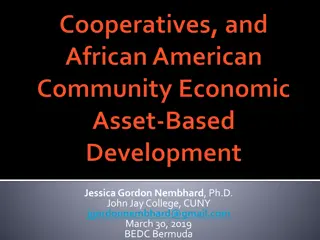Overview of Democratic Transitions and Revolutions
Explore the historical context of democratic transitions from the 1940s to 2020, including the waves of democracy as described by Huntington. Learn about bottom-up and top-down transitions, exemplified by mass protests in East Germany leading to German reunification. Delve into the complexities of political changes through popular revolutions and liberalizing reforms.
Download Presentation

Please find below an Image/Link to download the presentation.
The content on the website is provided AS IS for your information and personal use only. It may not be sold, licensed, or shared on other websites without obtaining consent from the author. Download presentation by click this link. If you encounter any issues during the download, it is possible that the publisher has removed the file from their server.
E N D
Presentation Transcript
Independent Countries, Democracies, and Dictatorships, 1946-2020 200 160 120 Number of Countries 80 40 Democracies Dictatorships Independent Countries 0 2010 2020 1980 1990 1950 1960 1970 2000 Year
Huntington: Three Waves of Democracy 1. 1828-1926: American and French revolutions, WWI. 2. 1943-1962: Italy, West Germany, Japan, Austria etc. 3. 1974-: Greece, Spain, Portugal, Latin America, Africa etc.
A bottom-up transition is one in which the people rise up to overthrow an authoritarian regime in a popular revolution. A top-down transition is one in which the dictatorial ruling elite introduces liberalizing reforms that ultimately lead to a democratic transition.
East Germany Mass protests in 1989 forced the East German government to open up the Berlin Wall and allow free elections. The end result was German reunification. From our vantage point, the collapse of communism in Eastern Europe is seen as inevitable.
S W E D E N D E N M A R K B a l t i c S e a N o r t h S e a H a m b u r g B r e m e n P O L A N D N E T H E R L A N D S B e r l i n H a n n o v e r G E R M A N Y D s s e l d o r f D r e s d e n C o l o g n e B o n n B E L G I U M F r a n k f u r t C Z E C H O S L O V A K I A S a a r b r c k e n N r n b e r g L U X E M B O U R G S t u t t g a r t F R A N C E M u n i c h U n i t e d S t a t e s A U S T R I A U n i t e d K i n g d o m F r a n c e L I E C H T E N S T E I N 0 7 5 M i S o v i e t U n i o n 0 7 5 K m S W I T Z E R L A N D
Bernau Berlin Wall Hennigsdorf American sector British sector French sector Soviet sector Falkensee WES T E AS T Checkpoint Charlie Neuenhagen BERLIN BERLIN Potsdam EA S T G E R MAN Y 0 3 Mi 0 3 Km
At the time, the collapse of communism came as a complete surprise to almost everyone. Communist regimes, and particularly East Germany, seemed very stable.
Mikhail Gorbachev 1985 Perestroika (economic restructuring) was a reform policy aimed at liberalizing and regenerating the Soviet economy. Glasnost (openness) was a reform policy aimed at increasing political openness.
Events in 1989 Solidarity and Roundtable Talks in Poland. Hungary liberalized and opened its borders to the West. Neues Forum: Wir bleiben hier and Wir sind das Volk.
Berlin Wall Berlin Wall I, click here (5:56) Berlin Wall II, click here (3:44) Wind of Change, click here (7:36)
Bottom-up transitions People Power Revolution in the Philippines, 1986. June Resistance in South Korea, 1987. Velvet Revolution in Czechoslovakia, 1989. Orange Revolution in the Ukraine, 2006. Jasmine Revolution in Tunisia, 2011.
Tiananmen Square, China, June 1989 2017 Tiananmen Square Documentary, click here (23:02) BBC News, June 4, 1989, click here (3:34) 2017 Frontline Documentary, click here (1:24:23)
In 2015, only 15 out of 100 students at Beijing University were able to recognize this photo.
How can we explain these bottom-up transitions? Why are revolutions so rare and hard to predict? Why do dictatorship regimes seem so fragile after the fact but so stable beforehand?
Collective action refers to the pursuit of some objective by groups of individuals. Typically, the objective is some form of public good.
A public good is nonexcludable and nonrivalrous. Nonexcludability means that you can t exclude people from enjoying the public good. Nonrivalry means that there s just as much public good for people to enjoy no matter how many people consume it. Examples: Lighthouse, fire station, national park, democracy.
Public goods are often quite desirable. You might expect that groups of individuals with common interests would act collectively to achieve those interests.
The collective action, or free-rider, problem refers to the fact that individual members of a group often have little incentive to contribute to the provision of a public good that will benefit all members of the group.
Imagine a group of N individuals. If K people contribute or participate, the public good is provided. The value of the public good to each individual is B. The cost of contributing or participating is C. Let s assume that B > C.
Pro-Democracy Protest: Do I Participate or Not? Scenario 1 Scenario 2 Scenario 3 (Fewer than K 1 participate) (Exactly K 1 participate) (K or more participate) - C B C B C Participate B Don t participate 0 0 Note: K = the number of individuals that must participate for the pro-democracy protest to be successful; C = cost associated with participating; B = benefit associated with a successful pro-democracy protest; underlined letters indicate the payoffs associated with the actor s best response participate or don t participate in each scenario. It s assumed that B C > 0.
The likelihood of successful collective action depends on the costs of participation and the size of the benefit. Successful collective action is more likely when C goes down. Successful collective action is more likely when B goes up.
The likelihood of successful collective action also depends on: 1. The difference between K and N. 2. The size of N. This is because of their effects on the incentive to free ride.
The difference between K and N. If K = N , then there s no incentive to free-ride. If K < N , then there s an incentive to free-ride. The larger the difference between K and N , the greater the incentive to free-ride. Successful collective action is more likely when the difference between K and N is small.
The size of N. The size of N influences the likelihood that you ll think of yourself as critical to the collective action. The larger the group, the harder it is to monitor, identify, and punish free-riders. Successful collective action is more likely when N is small. This leads to the counter-intuitive result that smaller groups may be more powerful than larger groups.
Collective action theory provides an explanation for the apparent stability of communism in Eastern Europe and for why public demonstrations in dictatorships are so rare. Although many people under dictatorship share a common interest in the regime s overthrow, this doesn t automatically mean they ll take collective action to achieve this.
Collective action theory provides an explanation for the apparent stability of communism in Eastern Europe and for why public demonstrations in dictatorships are so rare. Although many people under dictatorship share a common interest in the regime s overthrow, this doesn t automatically mean they ll take collective action to achieve this. Participation in collective action now becomes the puzzle we need to explain.
Tipping models provide an explanation for the mass protests that occurred in Eastern Europe in 1989.
An individual must choose whether to publicly support or oppose the dictatorship. They have a private and a public preference regarding the dictatorship. Preference falsification: Because it s dangerous to reveal your opposition to a dictatorship, individuals who oppose the regime often falsify their preferences in public.
Theres often a protest size at which individuals are willing to publicly reveal their true preferences. As protests become larger, it becomes harder for dictatorships to monitor and punish each individual. A revolutionary threshold is the size of protest at which an individual is willing to participate.
Individuals naturally have different revolutionary thresholds. Some people with low thresholds are happy to oppose the government irrespective of what others do. Some people with higher thresholds will protest only if lots of others do. Some people with very high thresholds actually support the regime and are extremely unwilling to protest.
The distribution of revolutionary thresholds is crucial in determining whether a revolution occurs or not. Society A = {0, 2, 2, 3, 4, 5, 6, 7, 8, 10}
The distribution of revolutionary thresholds is crucial in determining whether a revolution occurs or not. Society A = {0, 2, 2, 3, 4, 5, 6, 7, 8, 10} Only one person will protest.
The distribution of revolutionary thresholds is crucial in determining whether a revolution occurs or not. Society A = {0, 2, 2, 3, 4, 5, 6, 7, 8, 10} Only one person will protest. Society A = {0, 1, 2, 3, 4, 5, 6, 7, 8, 10}
The distribution of revolutionary thresholds is crucial in determining whether a revolution occurs or not. Society A = {0, 2, 2, 3, 4, 5, 6, 7, 8, 10} Only one person will protest. Society A = {0, 1, 2, 3, 4, 5, 6, 7, 8, 10} Nine people protest.
A revolutionary cascade is when one persons participation triggers the participation of another, which triggers the participation of another, and so on.
Society A = {0, 2, 2, 3, 4, 5, 6, 7, 8, 10} Society A = {0, 1, 2, 3, 4, 5, 6, 7, 8, 10} Nine person revolt and revolutionary cascade.
Society B = {0, 2, 3, 3, 4, 5, 6, 7, 8, 10} Society B = {0, 1, 3, 3, 4, 5, 6, 7, 8, 10} Two person revolt and no revolutionary cascade.
The same change in revolutionary thresholds may lead to a revolution in one setting but to a small, abortive, and ultimately unsuccessful protest in another. Economic recessions and deprivation may cause private preferences and revolutionary thresholds to move against the regime without actually causing a revolution. Structural factors aren t sufficient to produce revolutions, although they can make revolutions more likely by shifting the distribution of revolutionary thresholds.
Preference falsification means that a societys distribution of revolutionary thresholds is never known to outsiders or even the individuals in that society. Thus, a society can come to the brink of a revolution without anyone knowing.
Our inability to observe private preferences and revolutionary thresholds conceals potential revolutionary cascades and makes revolutions impossible to predict. Timur Kuran: predictability of unpredictability
Structural changes in the 1980s lowered the revolutionary thresholds of East Europeans. Appointment of Gorbachev. Poor economic performance in Eastern Europe. Statement that the Soviet Union would not intervene militarily in the domestic politics of Eastern Europe.
Demonstration effects and revolutionary diffusion. The successful introduction of pro-democracy reforms in one country reduced revolutionary thresholds elsewhere. This led to a revolutionary cascade across countries rather than simply across individuals within countries. Poland 10 years, Hungary 10 months, East Germany 10 weeks, Czechoslovakia 10 days.
Why did the collapse of communism seem so inevitable in hindsight? Historians who interviewed individuals across Eastern Europe report that there was a huge pent-up pool of opposition to Communist rule that was bound to break at some point.
Preference falsification works both ways! As a revolutionary cascade starts to snowball, supporters of the Communist regime may feel obliged to join the pro-democracy protests. Just as pro-democracy supporters falsify their preferences under dictatorship to avoid punishment, pro-dictatorship supporters falsify their preferences under democracy. Revolutions will always appear inevitable in hindsight.
A top-down transition is one in which the dictatorial ruling elite introduces liberalizing reforms that ultimately lead to a democratic transition. A policy of liberalization entails a controlled opening of the political space and might include the formation of political parties, holding elections, establishing a judiciary, opening a legislature, and so on.
